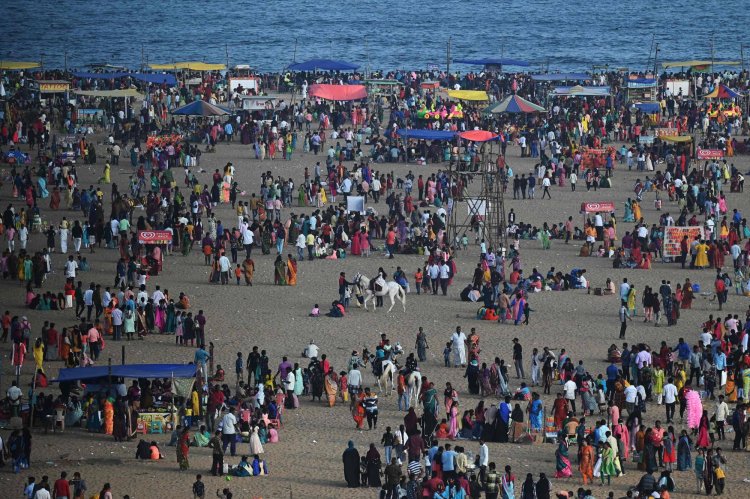China’s Population Falls; India in Better Space
STORIES, ANALYSES, EXPERT VIEWS

China’s population, according to its National Bureau of Statistics, fell to 1,411.8 million in 2022, from 1,412.6 million in the previous year. An absolute decline in population, writes Harish Damodaran (Senior Visiting Fellow at CPR) “is a landmark event, for a country that is soon set to be surpassed — if it has not already — by India as home to the most number of people……” United Nations’ projections are that India’s population stood at 1,417.2 million in 2022 (more than China’s) and is expected to reach 1,428.6 million in 2023.
“The potential implications, especially economic, of China’s shrinking population and India’s surging ahead, are huge,” says Damodaran.
Mortality and fertility
Mortality and fertility are the two reasons for populations to fall.
The crude death rate (CDR) — the number of persons dying per year per 1,000 population — was 23.2 for China and 22.2 for India in 1950. It fell to single digits for China first in 1974 (to 9.5) and for India in 1994 (9.8), and further to 7.3-7.4 for both in 2020.
Life expectancy at birth: Another mortality indicator is life expectancy at birth. Between 1950 and 2020, it went up from 43.7 to 78.1 years for China and from 41.7 to 70.1 years for India.
The total fertility rate (TFR) — the number of babies an average woman bears over her lifetime — was 5.8 for China and 5.7 for India in 1950. The TFR has fallen sharply for India in the past three decades. Between 1992-93 and 2019-21, it came down from 3.4 to 2; the fall was especially significant in the rural areas.
A TFR of 2.1 is considered as 'replacement-level fertility’. Simply understood, a woman having two children replaces herself and her partner with two new lives. Since all infants may not survive, the replacement TFR is taken at slightly above two.
The next question then is: If India’s TFR is already below-replacement, why is its population still increasing? And how has China’s finally shrunk?
China’s crisis
In this context, the real crisis for China, according to Damodaran “is the decline in its population that is of prime working age. If there is a large population that’s able to work and earn, not only will there be relatively fewer people to support — those too old or too young — but also greater tax revenues and savings potential from the generation of incomes. As these are directed to finance investments, a virtuous cycle of growth is unleashed — as indeed it happened in China.
“But that cycle has started to reverse, and the share of China’s working-age population is projected to fall below 50% by 2045.”
India’s opportunity
India has just begun seeing fertility rates fall to replacement levels, including in rural areas. The latter has to do with the spread of education — and, perhaps, also farm mechanisation and fragmentation of landholdings. Reduced labour requirement in agricultural operations and smaller holdings make it that much less necessary to have large families working the land.
But even with fertility rate declines, Damodaran argues “India’s population is projected to expand and de-grow only after touching 1.7 billion about 40 years from now.
"More important is the working-age population: its share in the overall population crossed 50% only in 2007, and will peak at 57% towards the mid-2030s.
Reaping the ‘demographic dividend: “Overall then, India has a window of opportunity well into the 2040s for reaping its ‘demographic dividend’, like China did from the late 1980s until up to 2015. However, this is entirely contingent upon the creation of meaningful employment opportunities for a young population — in the absence of which, the demographic dividend can well turn into a demographic nightmare.”
















